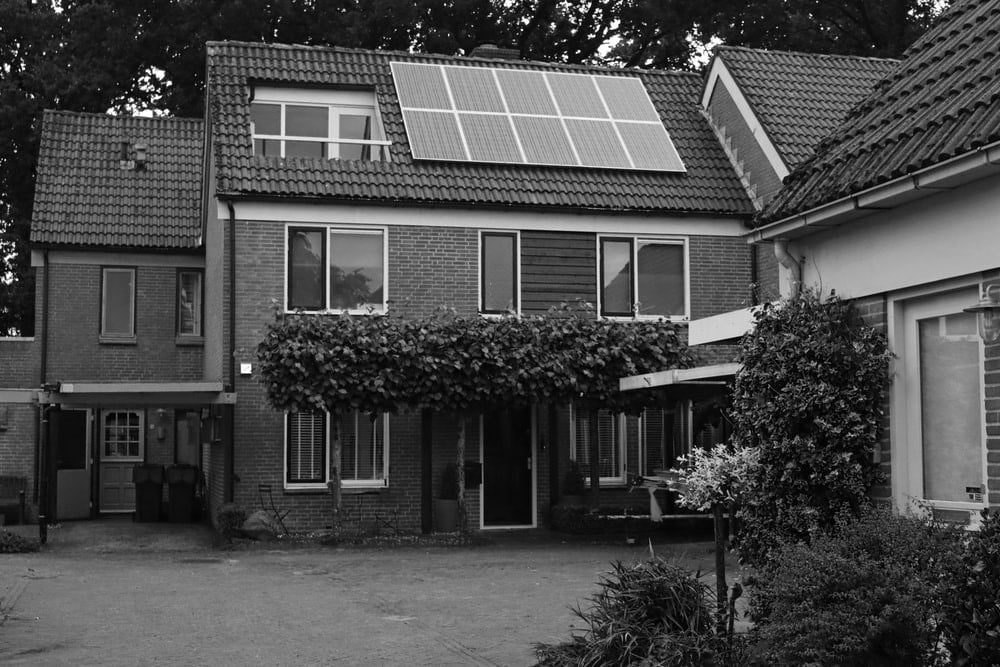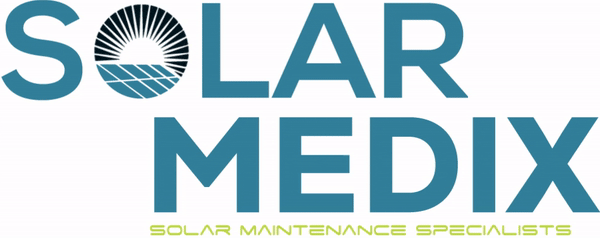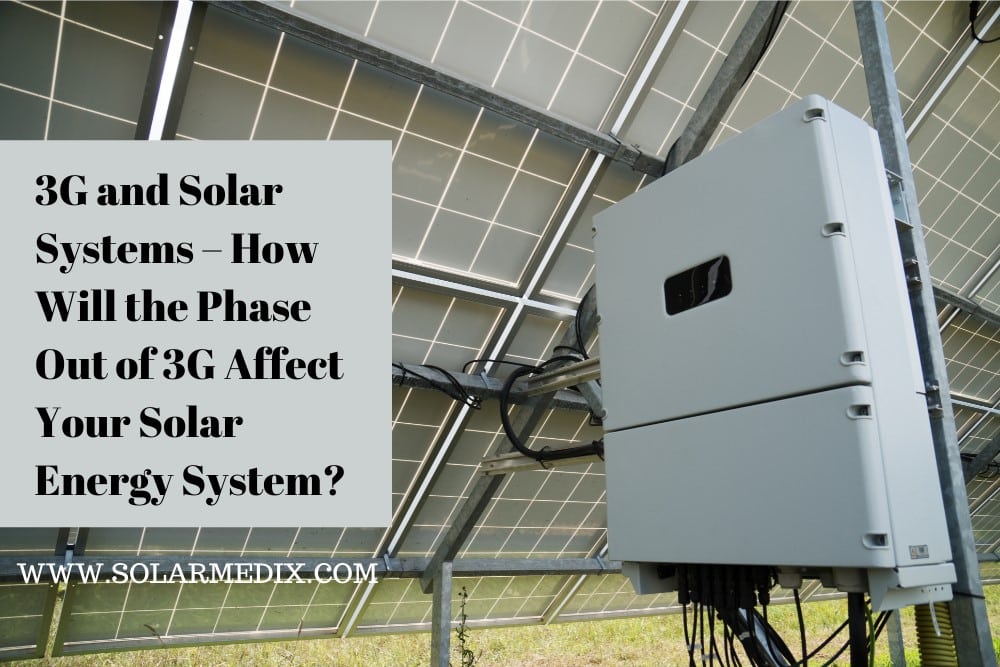3G and solar systems have a long-standing collaboration that is, unfortunately, coming to a sad end. The advent of 4G and 5G technologies has resulted in major carrier services rolling out 3G phase-out programs, terminating their support for 3G-operated devices. Let’s take a look at how this widespread 3G phase-out will impact your solar system.
What Is 3G?
3G stands for the third generation of wireless cellular technology. It was first deployed in Japan back in 2001 as an upgrade to the older cellular technologies that were GPRS, 2G, 2.5G, and 2.75G EDGE networks. The bandwidth of this technology was 30 times higher than the speed of older 2G networks. This higher bandwidth granted users faster data transfer speeds and better voice quality during calls.
Additionally, the faster speed of 3G networks also opened up access to various features, including mobile Internet access, wireless voice telephony, video calls, fixed wireless Internet access, and mobile TV.
This network was founded on a set of standards for mobile telecommunications services, mobile devices, and networks that follow up on the International Telecommunication Union’s International Mobile Telecommunications-2000 (IMT-2000) specifications.
3G cellular networks offered data transfer speeds of at least 144 Kbps. Later versions of 3G, also commonly known as 3.5G and 3.75G, allow mobile modems in laptop computers and smartphones with mobile broadband connectivity of many megabits per second. In fact, some 3G networks could go as high as 7Mbps.
Since the introduction of 1G systems in 1979 and the early to mid-1980s, a new generation of cellular standards has been developed every ten years or so. New frequency bands, faster data speeds, and non-backward-compatible transmission technology distinguish each iteration. Following up on this trend, soon 4G systems and now 5G systems were developed, with the latter being in the deployment stage.
3G Phase-Out–What’s the Reason Behind It?

Whenever a new generation of any particular technology is introduced, be it smartphones, vehicles, or anything else, the previous generation of that particular technology must be left behind as is a natural law, and cellular networks are no different in this regard.
According to the Americans Association of Retired Persons (AARP), somewhere between 5 million to 10 million Americans still use 3G phones, so why exactly are these networks being phased out?
The simple answer is to free up resources in order to accommodate the newer iterations of the technology. We need to spare more infrastructural resources than are currently available to be able to fully support new devices as cellular technology advances. Thus, we are left with no choice but to shut down outdated services.
To put it simply, the next generation of cellular communications technology (5G) is presently being deployed throughout the United States, with 3G networks being phased out to make way. But why is the move to 5G even required you wonder?
Over the existing extensively used 4G and 3G networks, 5G networks provide a few important advantages. They’ll give data transfer rates up to 100 times quicker in some regions, with nearly immediate response times (i.e., very little delay). The primary reason for requiring such high data transfer speeds is to support other technological advancements that involve the transfer of large amounts of data, like new virtual reality systems and autonomous (self-driving) cars.
According to QUALCOMM, an industry-leading SoC manufacturer, 5G networks can potentially deliver 500% faster data speeds than 4G LTE and achieve peak data rates of up to 20 Gbps based on IMT-2020 requirements.
Which Technologies Will Be Affected by the 3G Phase-Out?
Strictly speaking, any device that operates using wireless telecommunication networks and is supported by a 3G network will no longer be able to connect to cellular networks. Some products, such as 3G cell phones, will essentially become outdated as a result of this. However, some technologies, such as solar energy systems, will continue to function after the 3G shutdown. It is important to note, however, that you will lose some of the internet-based features of the system such as real-time performance monitoring. The following are some of the main technologies that will be affected:
- Solar systems
- Cell phones
- Home security systems
- Medical devices
- Smartwatches
- Tablets
- Vehicles
- Smart Televisions
- Smart Kitchen Appliances
3G and Solar Systems–How Will a 3G Phase-Out Impact Your Solar Energy System?
First and foremost, it bears repeating that the phase-out of 3G technology does not by any means imply that your solar system will stop working if it is supported by a 3G modem. By now, you should be aware of the fact that a solar energy system relies on sunlight to deliver an electrical output.
The solar cells within the solar panels harness the energy in the sun’s radiation and use it to generate electricity. Nowhere in this entire process is the 3G network used, and therefore, the loss of 3G will not directly diminish the performance of solar systems.
Moving further on the subject, if you choose not to upgrade to a 4G modem or connect your system to the internet, and the 3G network your system uses is shut down, you will lose the ability to remotely monitor your system, which can have some implications for your system’s payback period. Additionally, you may also be deprived of certain solar incentives if you lose your remote monitoring ability.
Performance Monitoring
Solar Monitoring is an excellent feature that works by connecting 3G and solar systems together. It allows solar owners to easily study their energy usage and generation trends and assess how much savings they have earned on their utility bills on a daily basis. In addition, it can also serve as a vital diagnostic feature necessary for ensuring that your system is in good working order.
Let’s suppose that your system experiences a technical fault resulting in diminished performance. A sudden drop in your energy production, as displayed by your monitoring tool, should be able to help you detect the presence of this fault. Some modern solar monitors even inform the owners of any anomalies in the energy production or consumption via SMS alerts.
Installers may even be able to diagnose and remediate the problem remotely in some cases. Having access to your property’s day-to-day energy consumption data can also help you cut down any unnecessary energy expenditures or track any appliances that may have been left turned on by accident, helping you cut down your electricity bill.
However, the loss of this option due to the phase-out of 3G means you risk overlooking any system underperformance concerns, which could result in missed savings and maybe even reduced system lifespan if the underperformance is due to a major fault.
Incentives
If you reside in a region where performance-based incentives, such as solar renewable energy certificates (SRECs), are available, cellular modems should be treated as an essential part of your solar system because of the considerable amount of money they can earn you through these incentives.
Performance-based incentives work by employing remote monitoring devices to track the electricity production of your system and reimburse you based on how much you produce. Generally, for every megawatt-hour (MWh) of energy your system outputs, you can earn one SREC. The SREC you earn can be monetized by selling them to your utilities through a broker or to a dedicated SREC market.
On the contrary, if you choose not to upgrade your 3G modem to a 4G modem or connect your system to the internet, you will forgo earning your quarterly SRECs, which can significantly lengthen the time it takes for your system completely to pay for itself leading to a slower ROI.
In Massachusetts, for instance, the bid price for an SREC ranges from $210 to $285. Let’s say you have a 6-kilowatt (kW) solar system that generates about 6 MWh of electricity per year; this entails that if you have a 3G modem and don’t upgrade it, you’ll be losing around $1260 to $1710 each year. Do remember that these are rough estimations!
Phase-Out of 3G–How Do You Upgrade Your 3G Modem?

A modem is a device that links your solar system to the internet via the solar inverter. Generally, the inverter company that provided the inverter for your solar system will also provide the modem. When it comes to inverters, Enphase and SolarEdge are two of the most well-known inverter brands.
You have a few options when it comes to upgrading your modem system. Following the instructions provided by your inverter manufacturer will likely be the simplest and the most pocket-friendly option. Since Enphase and SolarEdge are the two leading inverter brands, let’s take a look at how they deal with modem upgrades.
Modem Upgrades for Enphase Solar Inverters
If you have a 3G modem and own a solar system with an Enphase microinverter, you will likely have already been contacted by an Enphase representative regarding a modem upgrade. Enphase’s modem upgrading program has been running for several months now, and a number of users have already been updated to 4G modems.
If you’re not sure whether your modem needs to be upgraded, follow Enphase’s instructions for determining your modem information. Normally, systems installed before 2018 have 3G modems and, therefore, will need a modem upgrade.
Enphase recently obtained technology and operations & maintenance company called 365 Pronto in December 2021. This company will be responsible for the installation of these upgraded 4G modems for Enphase systems. If you prefer to do the installation yourself, Enphase has put together a video and FAQ that will walk you through the process. The replacement modem from Enphase costs $381, although if you have a newer system, the price may be lower.
Modem Upgrades for SolarEdge Solar Inverters
If your system is equipped with a string inverter from SolarEdge, you’ll probably have gotten an email from either your original installer (especially if you installed your system through a larger company) or from SolarEdge. You can call your installer or email SolarEdge directly to double-check whether or not your system is affected by 3G shutdowns.
If you find that you do need a modem upgrade, you must first approach your original installer to get a professional to perform the installation for you. You could also try to do it yourself with the help of video tutorials; however, you’ll need to source a new modem from a distributor because SolarEdge doesn’t sell modems directly to customers.
But do keep in mind that DIY installations are more prone to errors. Additionally, being tricked into purchasing a substandard modem is also a threat you expose yourself to in DIY modem replacements. As such, a DIY job is not recommended. Instead, get a professional for the job; if your original solar installer doesn’t entertain you, then try to find another company that is willing.
Is There Another Way to Overcome the 3G Phase-Out Problem?
You’ll be glad to learn that upgrading your modem is not the only option you have. Linking your system to the internet is a simple alternative that works for most inverters. Enphase has compiled a useful step-by-step guide for connecting your system to your Wi-Fi. On the other hand, you can use an Ethernet cable or a wireless card to connect your SolarEdge system to the internet, but you’ll need the assistance of a professional to do this since it requires opening the inverter.
It’s worth noting that if you connect your system to the internet rather than upgrading to a 4G cellular modem, you may lose some monitoring benefits, and maybe SRECs if your connection is unstable.
Frequently Asked Questions (FAQs)
Do You Need Internet for Solar Panels?
You do not need to connect the solar panels to the internet in order for them to generate electricity. However, if you want to monitor your system, then you will need an internet connection.
Do Solar Panels Use Wi-Fi?
While it is not a mandatory requirement, many solar owners do connect their solar systems to Wi-Fi to monitor their energy consumption and production from their smartphones.
What Is a Wi-Fi Inverter?
It is an inverter that can connect to your Wi-Fi and provide you with real-time data on the performance of your system through an app or website.
Do Solar Panels Affect Phone Signal?
If you have a rooftop solar system and are using a loft aerial, your cellular reception will be drastically reduced.
What Is the Biggest Problem with Solar Energy?
The biggest drawback of solar energy is that it only produces energy while the sun is shining.
3G and Solar Systems–Conclusion!
With the arrival of 2022, all major carrier services have started to phase out 3G, as planned. While this move will definitely impact monitored solar systems, the good news is that solar installers and inverter companies have already taken heed of this massive shift and have launched modem upgrading programs to counter this widespread 3G phase-out.
If you’re a solar owner with a 3G modem, we recommend reaching out to your installer or inverter company and upgrading your modem quickly before you end up missing out on any solar incentives.
The team at Solar Medix is ready to answer your questions and give you a no-obligation price quote. Feel free to call us at 732-785-4814 or book a consultation online. And we’ll get in touch within 24 hours.













